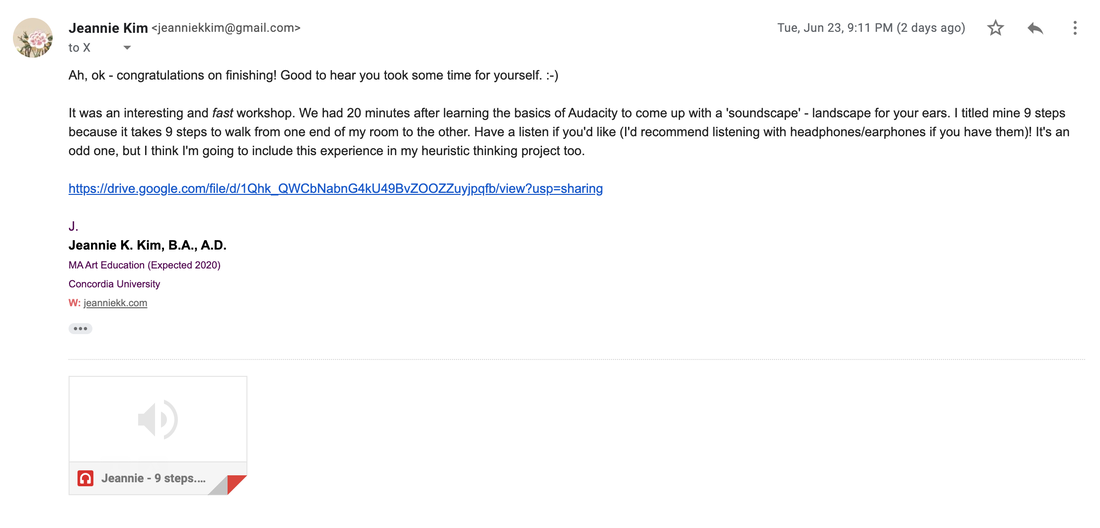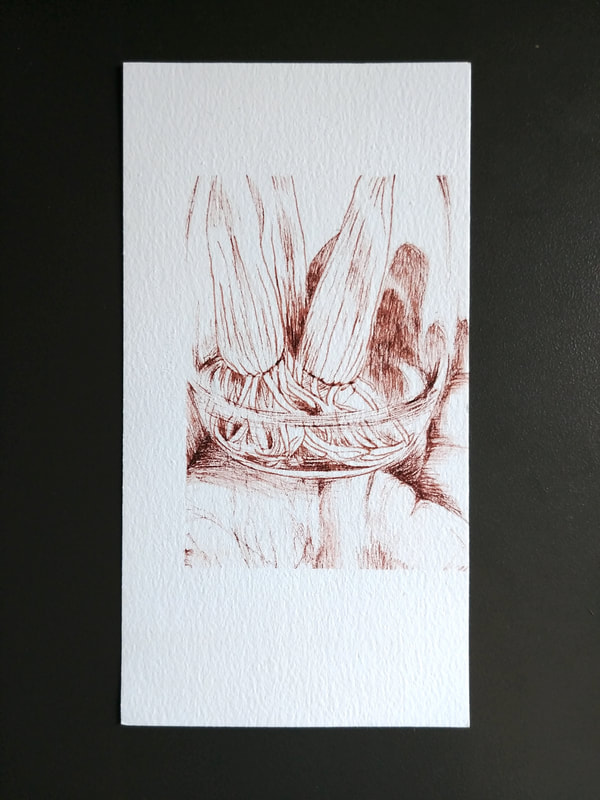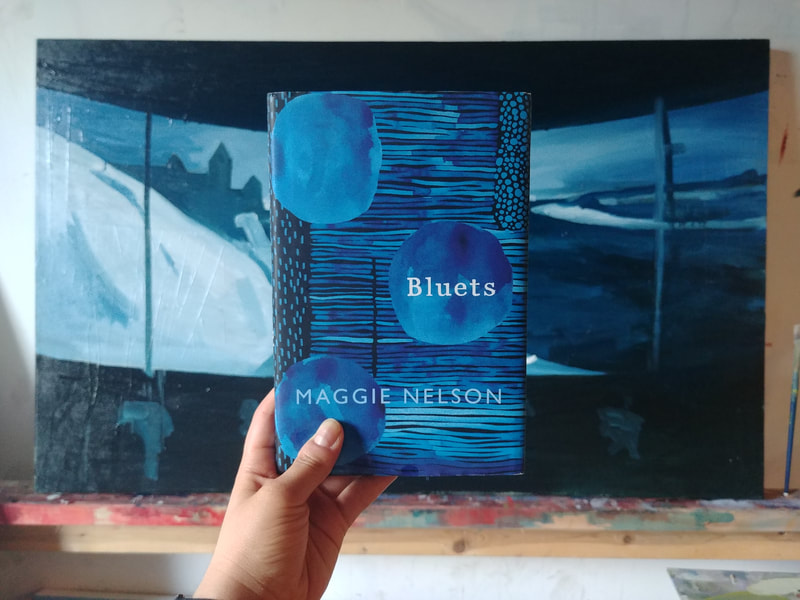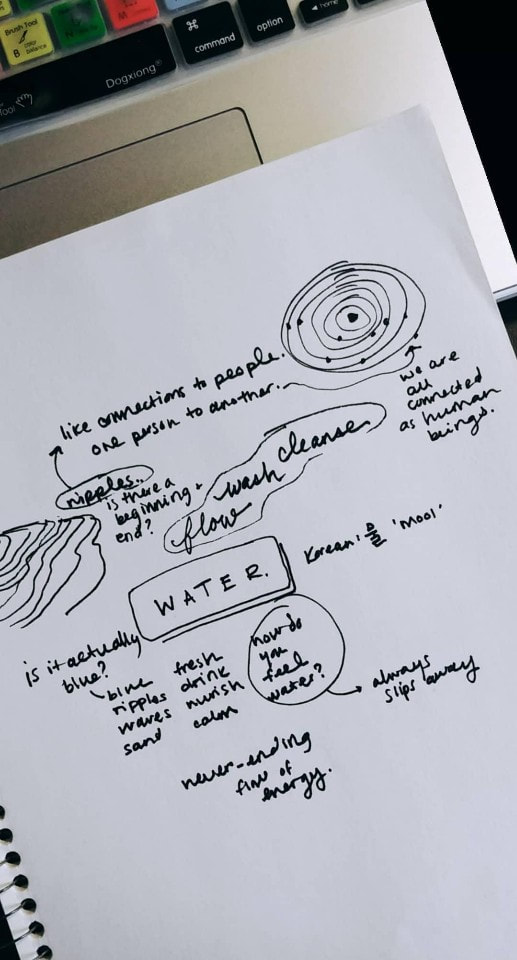|
As I thought about the theme of water further, I found myself going back to nature and how necessary it is in our daily lives, whether we are aware of it or not. I was naturally drawn to the main source of nature within my one-room apartment: green onions/scallions (파). They are an essential ingredient/garnish for most East Asian dishes, and my Korean household was no exception. These days in particular, they are not only a great source of comfort that reminds me of my mother's cooking, but also strength in simply watching how fast they grow day by day. They are incredibly resilient and require water and sunlight: a gentle reminder to take care of myself during these turbulent times with nourishment and care necessary for self-growth. As I observed and drew the patterns on the surface of the scallions and the wrinkles on my hands, I thought: "how different are we from plants, really?".
71. I have been trying, for some time now, to find dignity in my loneliness. I have been finding this hard to do. 72. It is easier, of course, to find dignity in one's solitude. Loneliness is solitude with a problem. Can blue solve the problem, or can it at least keep me company within it? No, not exactly. It cannot love me that way; it has no arms. But sometimes I do feel its presence to be a sort of wink - Here you are again, it says, and so am I. (Nelson, 2009, p. 28) Hi Mirae and Harriet,
I hope you've both been enjoying the sunny days! I have some ideas flowing (ha!) in my mind right now, and I've attached my brainstorming session to this email. Essentially, I am interested in the concept of ripples: how there needs to be an initiation for a rippling effect to occur. I see this in relation to human interactions - we are all connected as human beings, and our actions/dialogues/words have effects. Each of us needs to find it within ourselves to initiate the ripple, and once you do, you will start to feel the connections near and far. I also view human interactions/ripples as a never-ending cycle, like how a river constantly flows with no end. I am drawn to explore this concept with Asian watercolours and video/sound/gifs. I plan to explore these two mediums, and see how they work separately as well as together. I may end up sticking to one or the other, my process is heavily reliant on experimentation and creation for concrete ideas to emerge. I hope this is sufficient information! If you have any further questions, don't hesitate to let me know. Take good care, Jeannie Douglass, B. G., & Moustakas, C. (1985). Heuristic Inquiry: The Internal Search to Know. Journal of Humanistic Psychology, 25(3), 39–55. https://doi.org/10.1177/0022167885253004 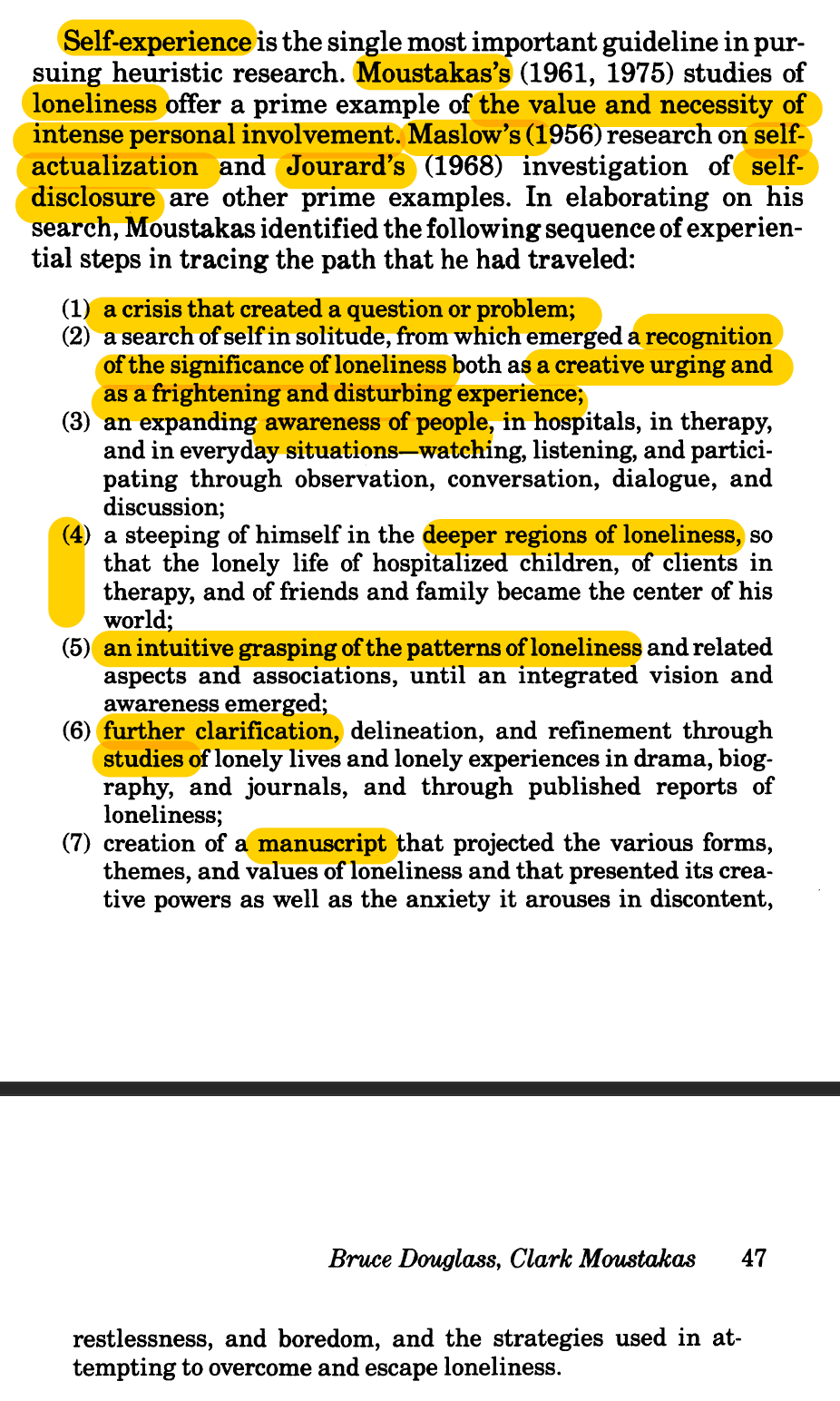 Independent Study Process
(Altered from above) 1.A crisis that created a question or problem (What does it mean to be alone amidst the covid-19 crisis as an artist and art educator in Montreal? How can this situation be used for creative exploration?) 2.A search of self in solitude: a recognition of the significance of feelings/emotions/loneliness as a creative outlet 3.An expanding awareness of people in everyday situations: observation, conversation, dialogue and discussion amongst others during this period in time 4.A steeping in the deeper regions of emotions through writing and creating 5.An intuitive grasping of the patterns of emotions/heuristic thinking 6.Further clarification through readings of similar concept (Moustakas, Nelson, Brindamour) 7.Creation of a manuscript/record of study (documentation of creation/journal/drawings) Heuristic Inquiry: The Internal Search to Know (1985), Douglass & Moustakas
Step 1 - Process:
Step 2 - Immersion:
Immersion for heuristic thinking is:
"...more impulsive than deliberate, more a wandering than a goal, more a way of being than a method of doing.” (Douglass & Moustakas, 1985, p. 48) |
Archives
July 2020
Categories
All
|
